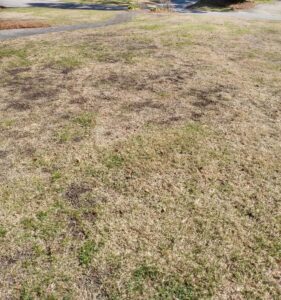
WNC Vegetable Growers: BOLO for Tomato Late Blight & Cucurbit Downy Mildew
Vegetable growers in western North Carolina: Be on the lookout (BOLO) for late blight on tomato and cucurbit downy …



El inglés es el idioma de control de esta página. En la medida en que haya algún conflicto entre la traducción al inglés y la traducción, el inglés prevalece.
Al hacer clic en el enlace de traducción se activa un servicio de traducción gratuito para convertir la página al español. Al igual que con cualquier traducción por Internet, la conversión no es sensible al contexto y puede que no traduzca el texto en su significado original. NC State Extension no garantiza la exactitud del texto traducido. Por favor, tenga en cuenta que algunas aplicaciones y/o servicios pueden no funcionar como se espera cuando se traducen.
Inglês é o idioma de controle desta página. Na medida que haja algum conflito entre o texto original em Inglês e a tradução, o Inglês prevalece.
Ao clicar no link de tradução, um serviço gratuito de tradução será ativado para converter a página para o Português. Como em qualquer tradução pela internet, a conversão não é sensivel ao contexto e pode não ocorrer a tradução para o significado orginal. O serviço de Extensão da Carolina do Norte (NC State Extension) não garante a exatidão do texto traduzido. Por favor, observe que algumas funções ou serviços podem não funcionar como esperado após a tradução.
English is the controlling language of this page. To the extent there is any conflict between the English text and the translation, English controls.
Clicking on the translation link activates a free translation service to convert the page to Spanish. As with any Internet translation, the conversion is not context-sensitive and may not translate the text to its original meaning. NC State Extension does not guarantee the accuracy of the translated text. Please note that some applications and/or services may not function as expected when translated.
Collapse ▲
Vegetable growers in western North Carolina: Be on the lookout (BOLO) for late blight on tomato and cucurbit downy …

Japanese Beetle Flights on the Rise Heightened flight activity will likely continue for the next 2-3 weeks. If you are …

Last month, we reached a milestone one year since spotted lanternfly was detected in North Carolina. The first active …

July has arrived and our field season is in full swing! At Cherry Research Farm in Goldsboro, NC and …

Written by Mariana Prieto-Torres and Lina M. Quesada-Ocampo. Pseudoperonospora cubensis is the causal agent of cucurbit downy mildew (CDM). This …

Registration is now open for the 2023 Organic Commodities Field Day. This in-person event will cover new research on …

Tomato brown rugose fruit virus (ToBRFV) was detected on some tomato seeds from a seed company called Fruition Seeds …

Yesterday we were in Goldsboro, with the team at Cherry Research Station planting an organic sunflower variety trial. This …

Zoysiagrass rejoins with its brother centipedegrass after being released from winter dormancy, but the duo has just days to …

The warm weather seems to be here to stay and with that, last year’s new invasive insect arrivals are …

Are you considering becoming USDA certified organic? Not sure where to start? We’ve updated out page on becoming USDA certified organic, …

As temperatures across our region roller coaster their way into spring, bermudagrass putting greens are often some of the …

The following post is a 10-year review (2013-2022) of turfgrass samples submitted to our lab from golf course putting …

Live Zoom: 2023 Auxin Herbicides-Best Management Practices Contact Maryanna for live Zoom link and passcode. Email: mrbenne6@ncsu.edu or Phone: 252.459.9810 These …

RESPIRATOR FIT TESTING February 8th N.C. Cooperative Extension, Rowan County Center February 9th N.C. Cooperative Extension, Bertie County Center February 13th N.C. Cooperative Extension, Hertford …

Overall, total turfgrass samples submitted in 2022 to the NC State Turf Diagnostics Lab were higher (+16%) than samples …

In summer 2022, symptoms of TSWV (Tomato spotted wilt virus) were observed at two tomato farms in Rowan County, …

This factsheet describes the biology of the giant strong-nosed stink bug, Alcaeorrhynchus grandis, and provides …

This manual prepares pesticide applicators for Forest Pest Control Certification exams in the following states: …

This manual provides guidance tailored for North Carolina's non-commercial pesticide applicators using fumigants in commodity …

This factsheet describes the small hive beetle, its life cycle and how to prevent infestations …


It is the goal of every beekeeper to maintain healthy, productive colonies. This can only …
To apply restricted-use pesticides to agricultural commodities, you must be certified or be supervised by …

This factsheet offers information on the biology and management of the emerald ash borer, an …